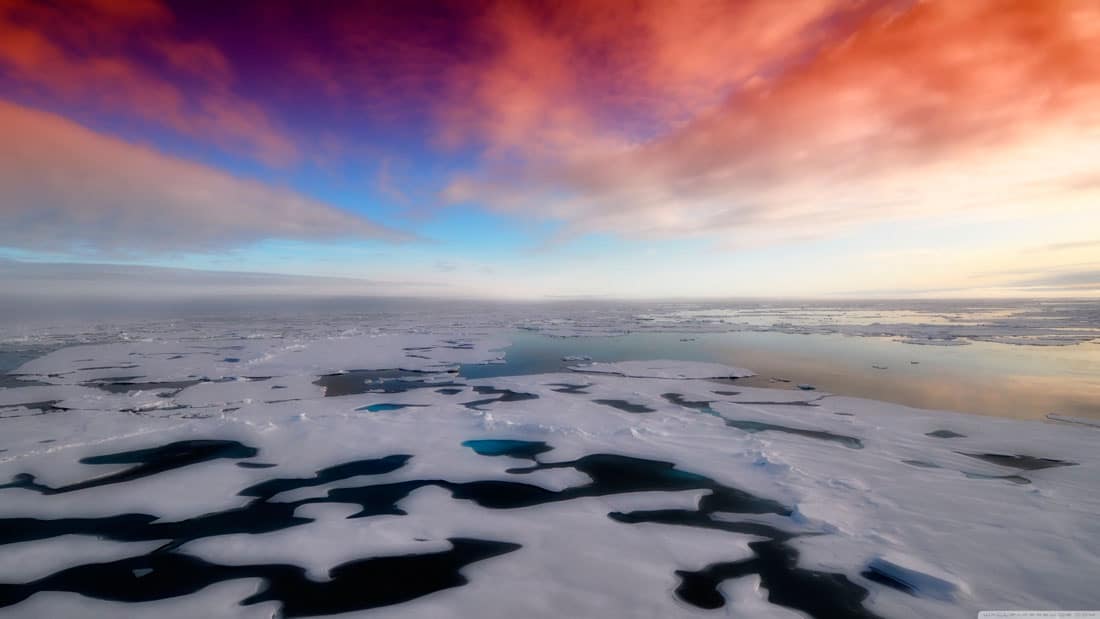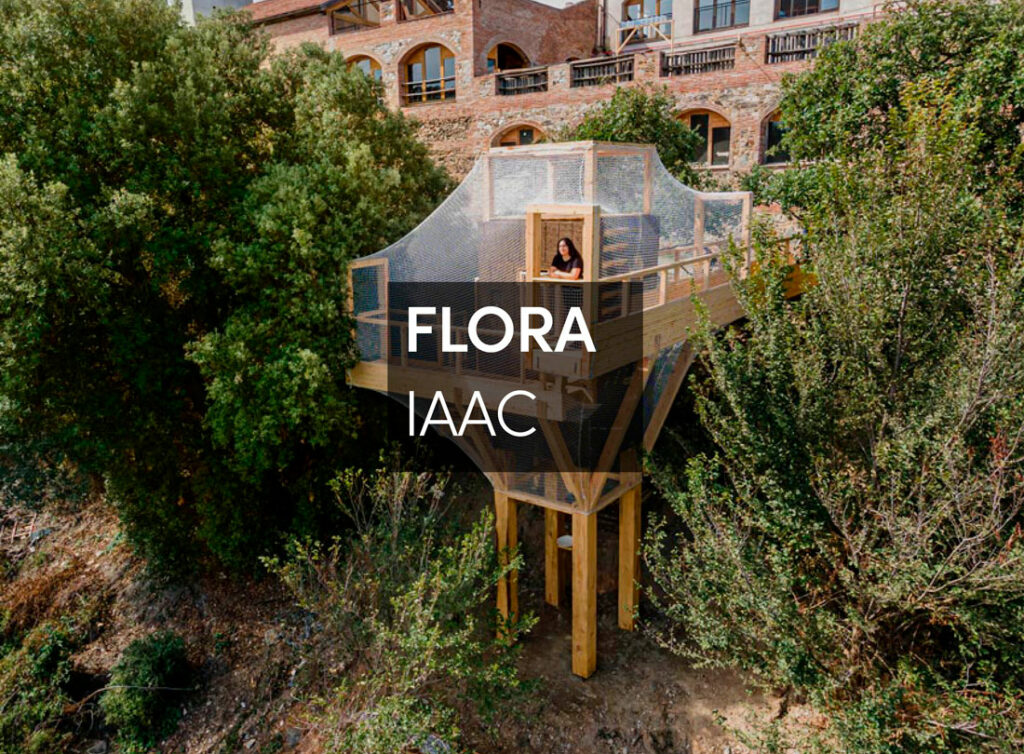Scientists now recognize that the Arctic is heating up more than twice as fast as any other region. As average land temperatures shift to more than 1.9 degrees Celsius (3.4 degrees Fahrenheit) above the historic baseline, Arctic researchers have come to recognize that the “region is moving from a climate that is characterized less by ice and snow and more by open water and rain” (Fountain 2020, A13).
By 2018 hundreds of ships were already navigating the northern passage through the not-so-frozen Arctic Sea, and it is predicted that by mid-century there will be not just a Northwest Passage along the coastline but a trans-Arctic passage cutting straight across the North Pole, “the first time in 2.6 million years that the Arctic Ocean has lacked any sea cover.” (Bennett 2019). As early as the 2030s, it may be possible in the summer months “to sail in a regular vessel across the top of the Earth.” What are the implications of this? And how should we approach understanding how those implications are affecting the region and its people? As explained below, “mobility studies,” or the study of the movement of human populations, has an essential role in the answer.
Indigenous communities and Far North settlers have been grappling with the consequences of climate change for some time. Private sector businesses, too, have begun to seize the opportunities offered, opening new shipping routes, building freight ports, and buying oil drilling leases. Chinese policy documents already refer to the “Polar Silk Road” and the “Central Arctic Passage.” At the heart of these and other regional changes are transformations in how people and things move, summed up by the word “mobilities.” The new interdisciplinary field of “mobility studies” addresses not just human movement (by land, sea, or air) but also how it is connected to the movements of vessels and vehicles, the migrations of wild and herded animals, and the ever-shifting planetary and geological mobilities of the earth itself in a world where even the North Pole is on the move (Witze 2019). These complex and intertwined mobilities are crucial for understanding the future of the Arctic as the ice melts and human activity increasingly moves into the Arctic Sea and across the thawing ice, tundra, and Boreal forests.
The unprecedented transformation of Arctic mobilities will elicit new ordering of markets, regulatory regimes, navigation, defense, security, and risks distributed across new geographies. Civil societies are only just beginning to grapple with the inevitable economic, military, and societal implications of climate change. And each of these implications has ethical implications for democracy, human ecology, and natural ecology.
While much of the discussion of the “opening” of the Arctic has focused on market and hard national security concerns, decision-makers and thought leaders must avoid framing the problems solely in terms of economic competition and military securitization. These dominant discourses about the changing Arctic prioritize forms of action that may unfold to the detriment of both people and nature. We must emphasize the rights of Arctic-dwellers and Indigenous peoples to self-determination and inclusion in decision-making processes as well as the responsibility for governments, policymakers, and civil societies to articulate critical perspectives on national security projects, extractive industries, and potential geoengineering that might take place in the Arctic. Indeed, further engaging humanities and social science in studying and addressing the Arctic’s changing mobilities advances the kinds of frameworks and ethical prompts that can guide development of necessary wider climate and social policy. Acknowledging the region’s traditional customs and knowledge and recognizing Arctic mobilities as a global challenge will result in a more ethical approach toward the region’s dynamic development.
Arctic Civil Society and Ecological Commons
Beyond states and markets, we must give civil society actors and multiple democratic stakeholders, including Indigenous communities, a prominent voice in planning and decision-making processes. In addition to strengthening international legal frameworks for managing Arctic activities and building stakeholder processes through the Arctic Council, it is incumbent upon all interested parties to recognize the ethical obligation to protect the Arctic as a global commons. As nation-states and companies compete for access, how will we prevent over-exploitation and conflict from taking place?
Arctic warming has massive and irreversible impacts on people, communities, and ecologies. The thawing of permafrost (or permanently frozen ground) along Arctic coastlines is already “leaving Indigenous communities struggling to cope with damaged infrastructure” (Fountain 2020, A13).
Along the Bering Strait, where the Northern Sea Route, Northwest Passage, and Transpolar Passage all meet, people living in communities such as Nome, Teller, or Dutch Harbor, Alaska could all potentially see more ships passing by, and maybe docking, by mid-century. For them, though, this activity may not herald the start of a great new gilded age of connectivity and globalization. The appearance of open water will drastically undermine food security and permanently alter a way of life that has relied on ice and the beluga whales, walruses, and seals that flock to it for generations. (Bennett 2019).
Movement across the Arctic involves the mobilities of people, vessels, animals, and freight. The sea, wind, and weather are also crucial actors here, with currents, tides, ice, wind, and fog moving through the landscape, shaping its affordances and risks (Stewart et al. 2019). There are complex assemblages of intersecting mobilities ranging from Innuit hunters tracking caribou, Sámi reindeer herders riding snowmobiles, cruise ship tourists following pods of whales, and nuclear submarines roaming beneath the ice, to teams of research scientists on the moving ice flows. How are these Arctic mobilities maintained and transformed, and with what implications, in the face of the melting sea and the coming wave of shipping and resource extraction?
The Study of Arctic Mobilities
The study of arctic mobilities is gaining pace with social science contributions that explore the human geographies of the Far North. In a 2015 special section of the journal Mobilities (which I co-edited), Joachim Habeck and Ludek Broz highlight both the positive and negative emotional qualities of travel in the Arctic region, whether tourists on the east coast of Greenland or reindeer herders in Siberia. The articles addressed “the joy of movement along with moments of frustration and tension,” including nuanced experiences of mobility such as “[t]ime and seasonality, companionship and imagination, and anticipated and unexpected encounters” (Habeck and Broz 2015: 511). This suggests that one way we might bring a more ethical perspective into the conversation is to broaden our understanding of the affective and emotional geographies that entangle people, animals, weather, and passages of travel.
The field of critical mobility studies is interested in the experiential, affective, and embodied dimensions of such mobilities, and how different practices of mobility interact (see e.g., Sheller and Urry 2006; Hannam, Sheller and Urry 2006; Adey et al. 2014, Büscher, Sheller and Tyfield 2016). Mobilities are understood here as a distributed activity taking place through “assemblages” of people, vehicles, equipment, and infrastructure spanning multiple places and support systems that we refer to as “moorings.” For example, the navigation aids and radios used for shipping, the ice roads for snowmobiling, and the connections between families spread over long distances all support the capability of movement and for dwelling “off the grid” in the harsh Arctic environment (Vannini and Taggart 2014). Survival also involves Indigenous technologies of animal tracking, ice observation, food preservation, and weather prediction.
Also crucial to “mobile nautical work” are assemblages of media that “enable the control of distance” by locating oneself, locating others, and avoiding navigational hazards (Boersma 2020). Arctic mobilities span the land-water-ice spectrum and involve combined technologies such as marine VHF radio, sonic depth finders, navigational buoys, radar, GPS-generated digital maps, drone flights, and satellite communications. But to move through the Arctic also includes more intimate aspects of the gendered, ethnic, and cultural dimensions of extended geographies of mobility across land, ice, and sea-spaces, whether for traditional groups such as walrus hunters and reindeer herders, long-distance freight workers and mariners, naval sailors and coast guards, or caribou and polar bears.
The Arctic is ultimately a highly mobile region where territorial control is difficult to impose. “Despite the apparent white calmness of the icy environment, this is an inhabited, dynamic and fragile environment deeply conditioned by the materiality of watery states…. It is busy with migratory patterns, nomadic movements, shipping routes and shifting borders” (Olóriz Sanjuán 2020). To understand the Arctic, one must understand its mobilities.
Planetary Social Thought
Arctic development is not simply a matter of states and markets, therefore, but also of civil society actors and especially Indigenous peoples and the natural and spiritual ecologies in which they dwell. This means understanding and including in decision-making traditional sources of knowledge concerned with mobility and dwelling in the far North, not just seeing it as a blank slate to be exploited for resources or an empty sea passage connecting other parts of the world. It also calls for developing humanities and arts approaches such as The Arctic Art Institute’s annual forum “Ecosystems of the Invisible,” which focused on “Interdependency as a Condition” in October 2020 and brought together speakers, artists, and performers to address major issues facing the region (Watson 2020). Also crucial are the voices of Native youth, like my nephew Sam Schimmel (Siberian Yupik and Kenaitze Indian), who is a youth delegate at the National Tribal Leadership Climate Change Summit this year. The virtual summit, which runs from October 2020 through May 2021, seeks to “use our traditional knowledge to develop approaches that assert Tribal leadership and perspectives in climate change adaptation, mitigation, and resiliency.”
Melting permafrost, the loss of sea ice, and the clear cutting of old-growth Boreal forests in places like Swedish Lapland are already driving food insecurity and leading to displacement. Robin Bronen and other scholars call for integrating indigenous knowledge into social and physical sciences concerned with changing environmental conditions in the Arctic, noting that:
Climate-forced population displacement, including community relocation, will be one of the greatest climate adaptation challenges for Alaska Native communities and the tribal, state and federal governing entities responsible for protecting community residents and providing technical assistance and resources. A new governance framework, based in human rights principles, must be created that can allow institutions to shift their efforts from protecting people in the places where they live to creating a relocation process when environmental and social thresholds are surpassed. (Bronen et al. 2020: 188).
Yet many communities do not want to be displaced, especially just as large new ports, industries, and tourists are moving in. Such climate-forced displacements call for a conversation around climate reparations and who will pay for loss and damages, as well as questions about who will benefit from Arctic development and frontier “gentrification.” Beyond climate dislocation itself, there are also major threats from the expansion of extractive industries, shipping accidents with potential oil spills, and the ethical unknowns of projects of solar geoengineering, all of which may have major impacts on Arctic peoples and ecologies.
This leads to a larger philosophical discussion of the “rights of nature,” which has been gaining ground recently. How are non-human natural entities represented in decision-making processes? How can the Earth itself have rights and protections on par with humans? And how can we develop new forms of “planetary social thought” (Clark and Szerszynski 2021) equal to the vast transformations that are reshaping our planet? To answer these and other questions, I call for expanding the conversation beyond the dominant framing of the Arctic’s policy future around security and business competition. We need to include a deeper engagement with the humanities and social sciences. This must be premised on a recognition of Arctic mobilities as a global challenge that is about more than capital and coercion. Dwelling in the Arctic requires interdependence, planetary cooperation, protection of Indigenous rights, customs, and knowledge, and the cultivation of ethical approaches toward this precious ecological commons.












